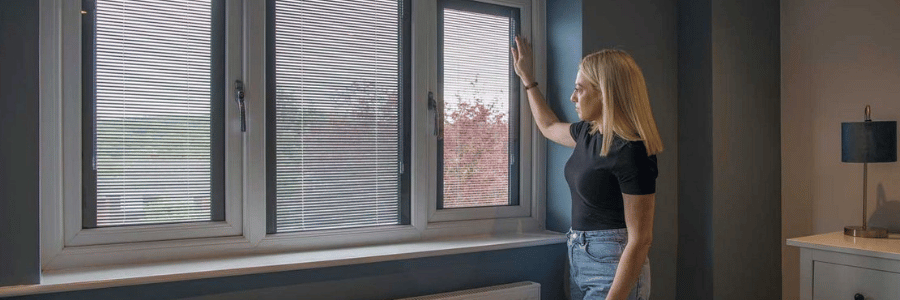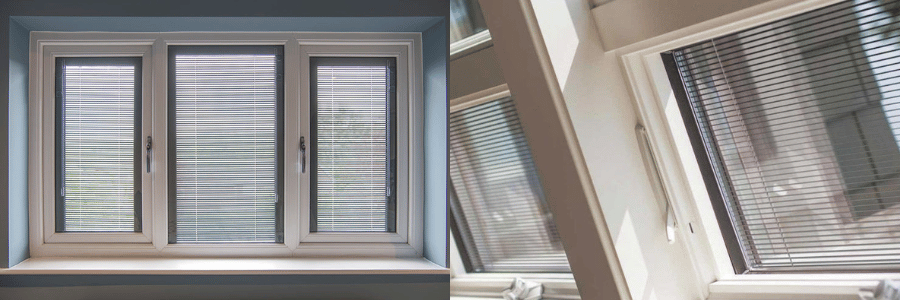When it comes to window treatments, blinds are one of the most common and practical choices for homeowners. However, traditional blinds can be a hassle to maintain, clean, and adjust. That’s why many homeowners are turning to windows with built-in blinds—also known as “blinds between glass” (BBG) or “integrated blinds”—as a more convenient alternative.
These windows feature blinds that are sealed within two panes of glass, providing a sleek, low-maintenance option for controlling light and privacy. While they offer several benefits, they also come with a few potential drawbacks. In this post, we’ll explore the pros and cons of windows with built-in blinds to help you determine if they’re the right choice for your home.
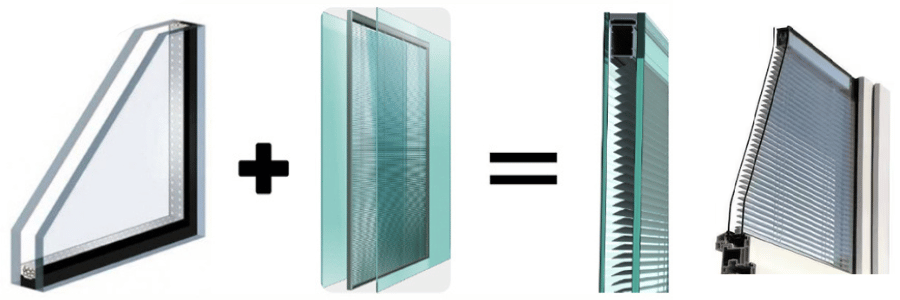
The Pros of Windows with Built-In Blinds
1. Low Maintenance
One of the biggest advantages of windows with built-in blinds is the minimal upkeep. Traditional blinds can accumulate dust, dirt, and allergens over time, requiring regular cleaning and upkeep. In contrast, integrated blinds are sealed between the panes of glass, meaning they’re protected from dust, dirt, and other contaminants. This makes them a great option for those who want to reduce cleaning chores and maintain a neat and tidy living space.
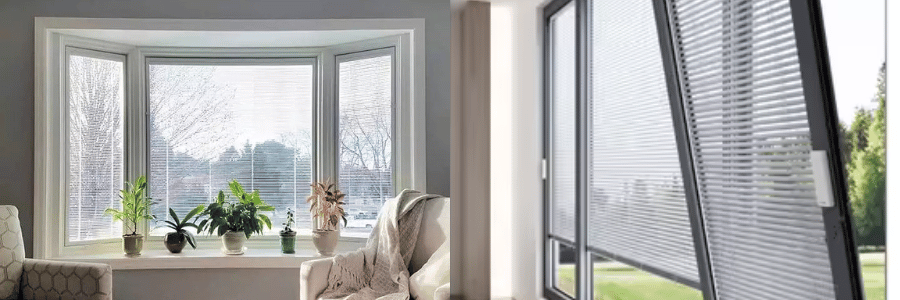
2. No Need for Cords or Wands
Another standout feature of built-in blinds is their cord-free operation. Most models can be adjusted using a simple slider or a magnetic control system, making them both safer and more convenient. This is particularly important for homes with young children or pets, as traditional blinds with cords can pose a strangulation hazard. The lack of external cords also gives your windows a cleaner, more streamlined appearance.
3. Enhanced Aesthetic Appeal
Windows with built-in blinds offer a sleek, modern look. Without the visible cords or hanging blinds, these windows create a more minimalist and aesthetically pleasing appearance. This is ideal for homeowners who want a clean, contemporary style. Whether you’re updating a kitchen, living room, or bedroom, the integration of blinds into the window can help create a more polished, uncluttered environment.
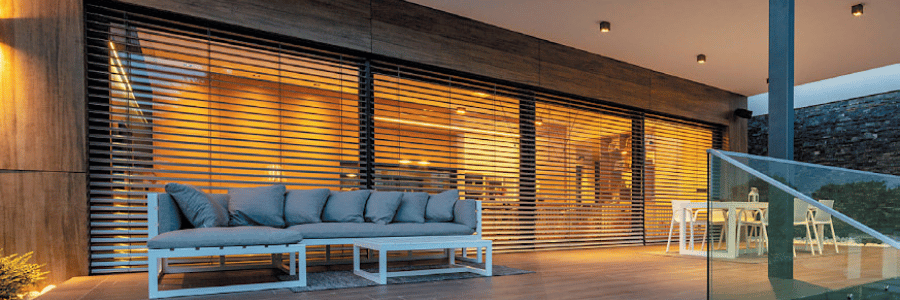
4. Improved Energy Efficiency
Built-in blinds can contribute to better energy efficiency. Because the blinds are sealed between the panes of glass, they act as an added layer of insulation, helping to regulate the temperature inside your home. The blinds can also reduce heat transfer through the glass, keeping your home warmer in the winter and cooler in the summer. This can result in savings on your energy bills, especially if your windows are large or in high-sun areas.
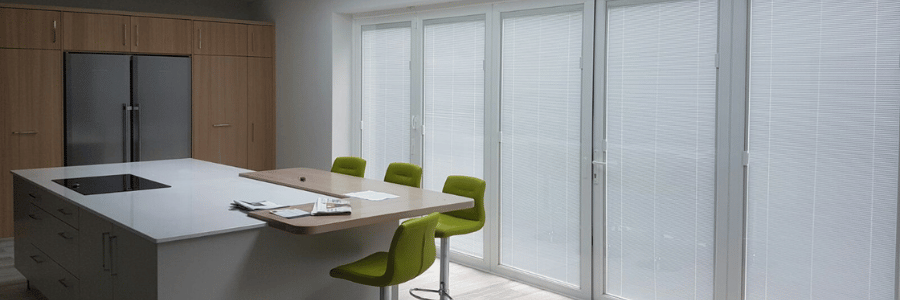
5. Increased Privacy and Light Control
With integrated blinds, you have the ability to easily adjust the level of privacy and natural light entering the room. Whether you want full sunlight or complete privacy, built-in blinds allow for quick and smooth adjustments. This gives you more flexibility in managing both light and privacy throughout the day without needing to deal with external blinds or curtains.
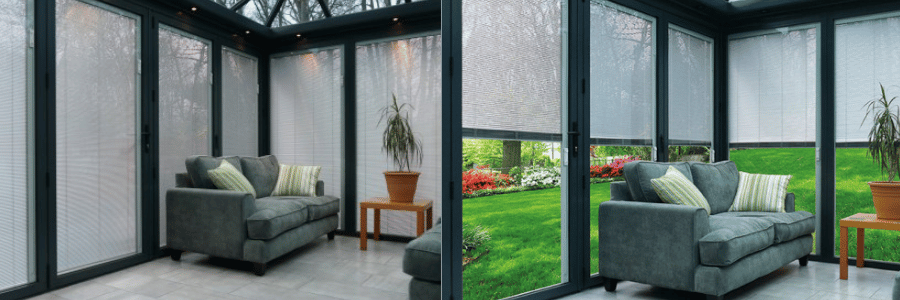
The Cons of Windows with Built-In Blinds
1. Higher Initial Cost
One of the main drawbacks of windows with built-in blinds is the higher upfront cost. These windows typically cost more than traditional windows with external blinds due to the added complexity of the built-in mechanism. Additionally, the price may vary depending on the brand, window type, and features (e.g., motorized vs. manual operation). While you may save money on cleaning and maintenance in the long run, the initial investment can be a deterrent for some homeowners.
2. Limited Style and Color Options
Built-in blinds are typically available in a limited selection of colors and styles. While some models offer customizable options, they may not have the same wide variety of choices that traditional window treatments provide. For example, with traditional blinds or shades, you can easily swap out fabrics, colors, or patterns to suit your changing decor. With integrated blinds, however, you’re often limited to the design that comes with the window, which could be a drawback for homeowners who love to experiment with different styles.
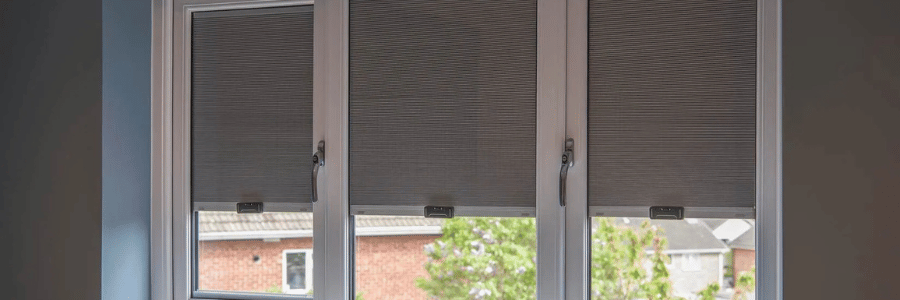
3. Repair and Replacement Can Be Tricky
While integrated blinds are low maintenance, repairing or replacing them can be more difficult than with traditional blinds. If the blinds malfunction or break (e.g., the internal mechanism jams or the blinds get stuck), you may need to replace the entire window unit, which can be costly and time-consuming. Traditional blinds, on the other hand, can be easily replaced or repaired without needing to replace the entire window.
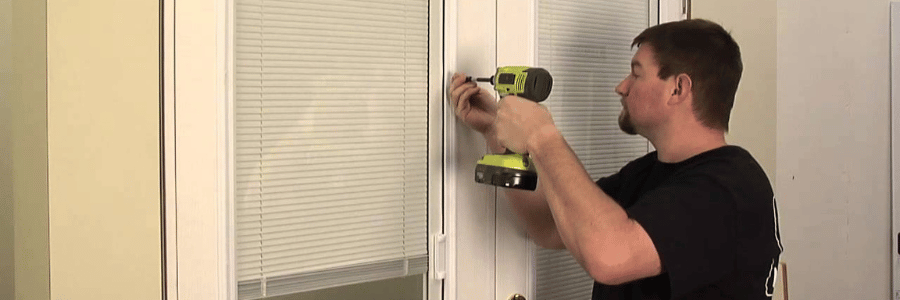
4. Not Ideal for Every Window Type
Windows with built-in blinds are generally best suited for certain window types and sizes. For example, they work well with sliding or casement windows, but may not be suitable for more complex window shapes or non-standard sizes. Additionally, integrated blinds may not be compatible with windows that require special treatments, such as windows with unusual tinting or coatings.
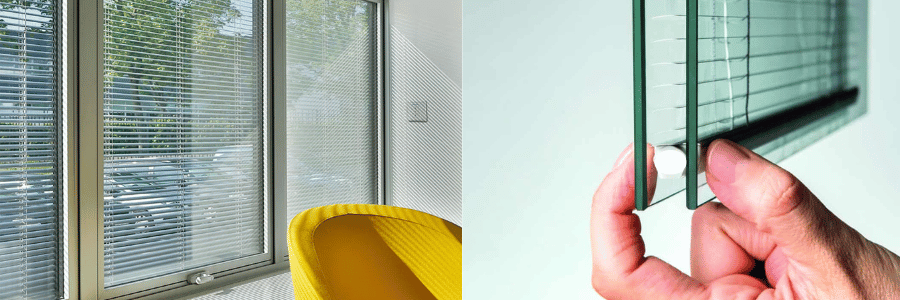
5. Limited Customization for Light Control
Although built-in blinds offer great light control, they can be less flexible than traditional window coverings. For example, you may not have the option to choose between various types of blinds, such as horizontal, vertical, or Venetian. The blinds are typically a set style with predetermined light control options. This can be a disadvantage for homeowners who want more precision or customization in how light enters their space.
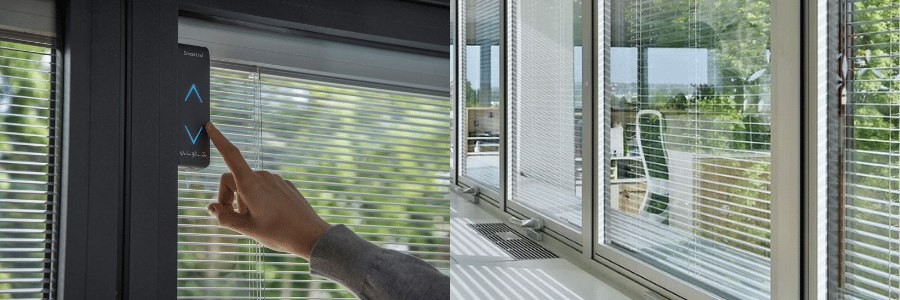
Final Thoughts
Windows with built-in blinds offer several compelling advantages, including low maintenance, safety, aesthetic appeal, and energy efficiency. They are ideal for homeowners looking for a streamlined, modern look with easy operation and minimal cleaning. However, they do come with a few trade-offs, including higher initial costs, limited style options, and potentially complicated repairs.
If you value convenience and clean lines, and don’t mind paying a little extra upfront, windows with built-in blinds could be an excellent investment for your home. However, if you prefer flexibility in design or worry about the long-term durability of integrated blinds, you might want to explore other window treatment options.
Ultimately, the decision comes down to your personal preferences, lifestyle, and budget. By weighing the pros and cons, you’ll be able to determine if windows with built-in blinds are the right fit for your home’s needs.

